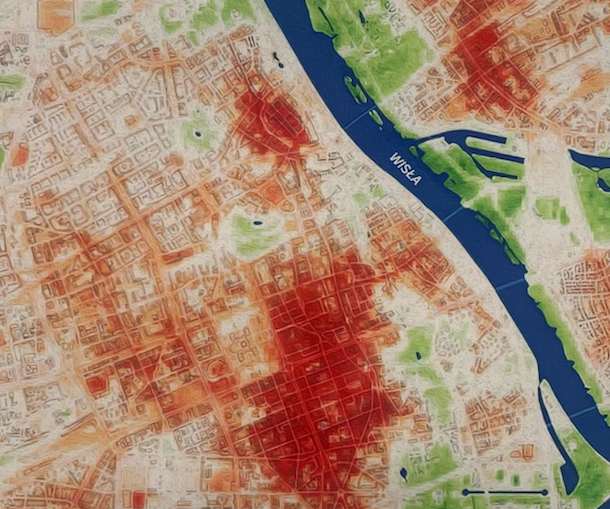In Poland, more people die from overheating than from hypothermia, especially in large cities. Resistance to extreme weather events is reduced by the urban heat island phenomenon, i.e. the occurrence of noticeably higher air temperatures in a city or particular parts of it. Concrete, asphalt and metal absorb considerably more solar energy than green areas. By giving it away, they increase the temperature in the city. The formation of an urban heat island is also influenced by human activity: the production of goods, traffic and air conditioning, which takes the heat outside. The response to rising temperatures is focused on the individual: we cool ourselves with air-conditioning in buildings and cars instead of increasing green spaces by replacing lanes and parking spaces with rows of trees. In times of climate crisis, a street without green space is the same as a street without sewers or other basic infrastructure.
Maciej Jurzyk, Jan Mencwel, Marcel Świerkocki
Rok powstania: 2022
digital print on paper
Includes Landsat and Copernicus Sentinel data, 2021. More at: https://creodias.eu/creodias-for-managing-urban-heat-islands). Courtesy of the Authors

